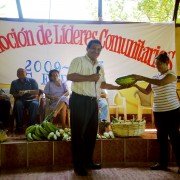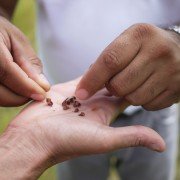Drought Decimates Crops, Leaves Families Hungry
Record breaking droughts are ravaging parts of Nicaragua. Harvests are low, cattle and other livestock are dying, and rivers and wells are at 25 to 50 percent of normal water levels. The cost of a month of basic food supplies has risen by about $10 in the last year.
CEPAD farmers in the regions of Jinotepe, San Francisco Libre and San Jose de Los Remates feel the devastating impacts of the drought every day. In the 18 impacted communities in those regions, CEPAD works with 1,517 farming families who are experiencing food insecurity and economic instability because of very low harvests so far this year. Those families have lost 1,400 acres of corn crops and 1,100 acres of beans. Many farmers lost their entire planting of these two crops — meaning they not only lost their food for this year but the seeds and soil quality that they need to plant in 2015.
This means families have reduced their daily meals from three to two.
“We’re just not really eating beans this year,” said Marcia Mendez from the community Mesa Sur. “What we have we have to sell. We only have rice to eat.”
CEPAD is working on an initiative to provide farmers new seeds for crops that require less water as well as training in water preservation and collection and alternative irrigation techniques.
“Sadly, we will keep seeing droughts and floods in the coming years,” said CEPAD Executive Director Damaris Albuquerque. “The traditional cycle of agriculture has changed in Nicaragua, a product of climate change. CEPAD has been training farmers to confront these risks by conserving soil and water and planting crops that can grow in all seasons. We want to help these farmers with food supply while they are preparing for the next harvest and adopting new techniques.”
Farmers in San Francisco Libre have had to sell off their livestock at low prices because they don’t have food or water to give them. Many animals in the dryest regions of the country have died in recent months.
Both climate change and the climate pattern El Niño have led to the drought, experts say. But the news isn’t all bad. The rainy season, which normally begins in May, seems to have finally arrived. Nicaragua’s countryside is turning green, and farmers are optimistic about the September and October harvest.




